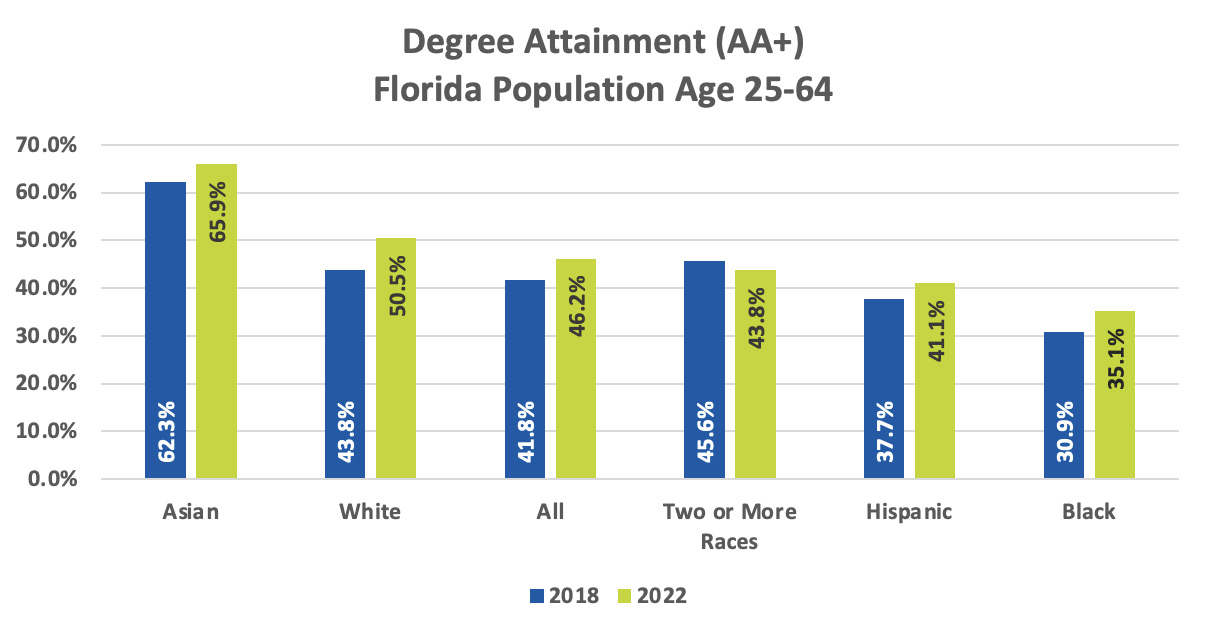
Florida leaders in 2019 wisely set an ambitious but achievable goal for educational attainment. The Strengthening Alignment between Industry and Learning (SAIL) to 60 Initiative seeks to increase to 60 percent the percentage of working-age adults in this state with a high-value postsecondary certificate, degree, or training experience by 2030.
The enabling legislation and existing statute specifically identify the Florida College Access Network (FCAN) as a partner in the effort. FCAN is at the heart of a movement to ensure all Floridians have the opportunity to achieve an education beyond high school and prosper in our dynamic economy.
FCAN and many other organizations interested in attainment rates, postsecondary education, and workforce development look to the Stronger Nation report published annually by the Lumina Foundation to track educational attainment rates for the population aged 25-64. Lumina’s research team analyzes American Community Survey (ACS) data in conjunction with credential and certificate attainment estimates published by the Georgetown University Center on Education and Workforce to create an overall postsecondary attainment rate for the working-age cohort. The current report, referencing 2021 data, shows that 52.5 percent of working-age Floridians have a degree or credential/certificate.
Between 2018 and 2022, degree attainment increased for respondents identifying as Asian (+3.6%), White (+6.7%), Hispanic (+3.4%) and Black (+4.2%). Note that race and ethnicity are separate concepts and not exclusive, i.e., persons of Hispanic ethnicity may be of any race, and persons identifying as a particular race may be Hispanic or non-Hispanic. The only group among Florida’s largest demographics in the age cohort to exhibit a decline in attainment are those identifying as Two or More Races. This group grew substantially in number from 2018 (22.5K) to 2022 (2.24M).
Substantial attainment gaps between Whites aged 25-64 (the plurality of the age cohort) exist in this latest data:
• White-Black: 15.4%
• White-Hispanic: 9.4%
• White-Two or More Races: 6.7%
• White-Asian: -15.4%
While Florida is making progress on its 2030 goal of 60% degree or workforce credential attainment, efforts must be bolstered to ensure that opportunity is accessible by all and that every Floridian achieves an education beyond high school and a rewarding career.
